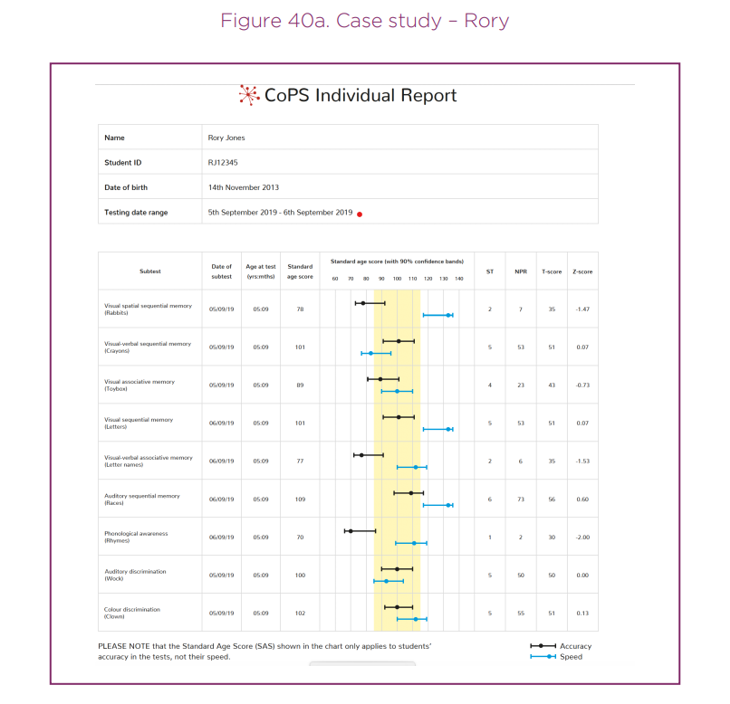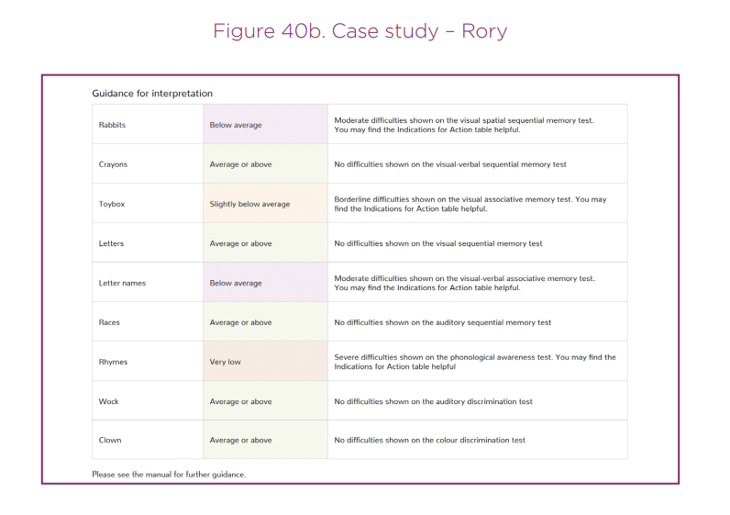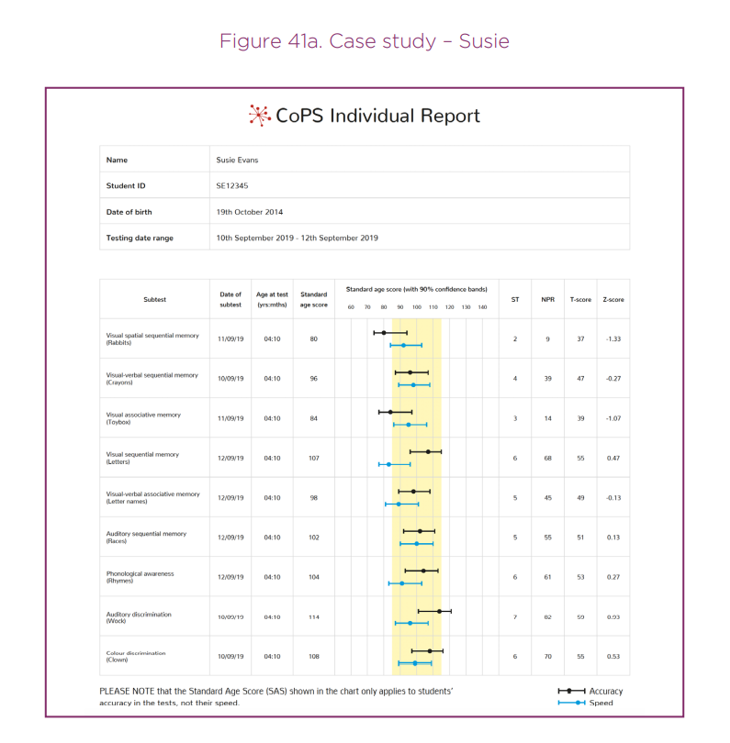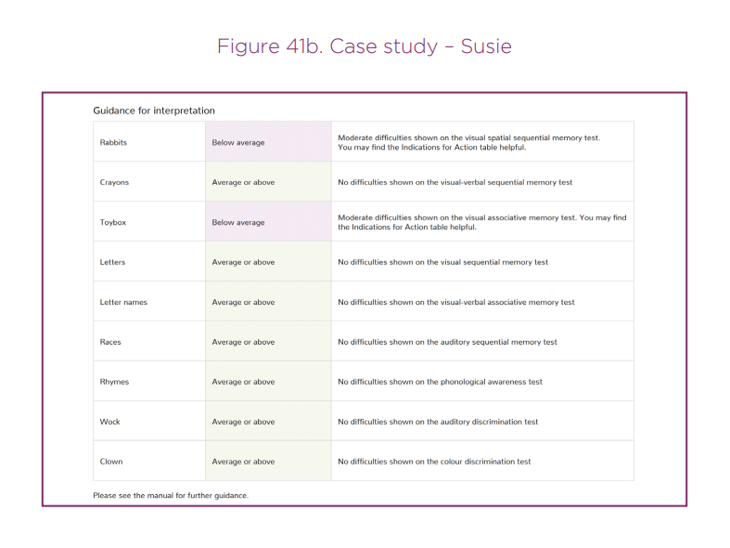Case Studies 3 and 4: Other complex profiles
Other complex profiles
Many CoPS reports display a complex pattern of ‘highs’ and ‘lows’ and at first sight appear quite puzzling. When tackling such profiles, it is particularly important to bear in mind any extraneous factors which might have affected the student’s performance. Examine the report to see on what days different tests were done. Motivation, ill-heath (actual or imminent), and impatience are often causes of a student under-performing. Or the student may simply have not understood the task (e.g. assuming that they have to do a subtest as quickly as possible when in fact it is accuracy which is most important). If the teacher is not confident about any particular result, then the safest course of action is to repeat the subtest(s) in question.
Case study - Rory
Rory’s report ((see Figures 40a and 40b), apart from the very low Rhymes result (suggesting poor phonological awareness), is rather difficult to interpret. Rory is aged 6 years 7 months. It might easily be assumed that his poor scores are the result of having attempted those particular subtests too quickly. However, the results of Races and Letters do not confirm this view, for the accuracy scores obtained on these subtests are average/good, despite fast speed scores. His results do not suggest an overall memory problem (Races, Crayons and Letters all being satisfactory), nor do they suggest a sequencing problem (Crayons and Letters being satisfactory). Nevertheless, he was struggling in literacy work, despite being a fairly bright boy. He had developed a reasonable sight vocabulary, but could not seem to remember the letter-sound relationships in phonics.


It turned out that on the day when he was attempting Rabbits, the school was visited by a touring drama workshop, which created great excitement amongst the pupils. Rory had been under the impression that he would not be chosen to participate if he did not hurry up and finish the CoPS subtests, hence the poor result. When this subtest was repeated another day, he scored at SAS 103, which is average. However, a repeat of Letter names did not result in significant improvement (his score at the second attempt was SAS 84). However, it then became more obvious that he did seem to have a weakness in associative memory (Toybox and Letter names) – a pattern had emerged. His teachers and his parents began to do regular memory work with him (as well as rhyming activities) and his ability to remember letter-sound relationships began to show some improvement.
Case study: Susie
The report of Susie, aged 4 years 10 months, is also puzzling (see Figures 41a and 41b). It is obvious that she is not impulsive – in all probability she is fairly careful as her speed scores tend to be a little below the average, on the whole. And it is clear that she has strengths in auditory skills. But the results on the visual/perceptual side are not particularly consistent. Although her Rabbits score is low, her problem does not seem to be with visual sequencing as the results of Letters and Crayons are average/good. She does not appear to have a problem with using verbal labels to aid visual memory (Crayons result is satisfactory). Only the Toybox and Rabbits results give cause for concern, and it is difficult to see what these have in common which might help us explain the profile. It subsequently turned out that the explanation for her difficulties on Toybox and Rabbits was a visual difficulty. She was found to be suffering from a form of amblyopia (lazy eye) in which the image from one eye was significantly out of focus. She thus was relying on the visual information from one eye. When she could focus her good eye on a stationary target (or a sequence of stationary targets), she was able to cope quite well. However, she found it very difficult to track a moving target accurately, to locate transient images in the visual field or to scan a row of images quickly. Thus she was experiencing problems on Rabbits (because the rabbit had usually moved on before she had located and registered its position) and Toybox (where she had to scan the row of shapes rapidly to find the one with the same colour as the target).


The main strategy for interpreting complex CoPS reports (or those that appear complex) is therefore to examine all possible reasons for any apparent area(s) of weakness, considering extraneous factors, and re-testing were necessary to check a result.

